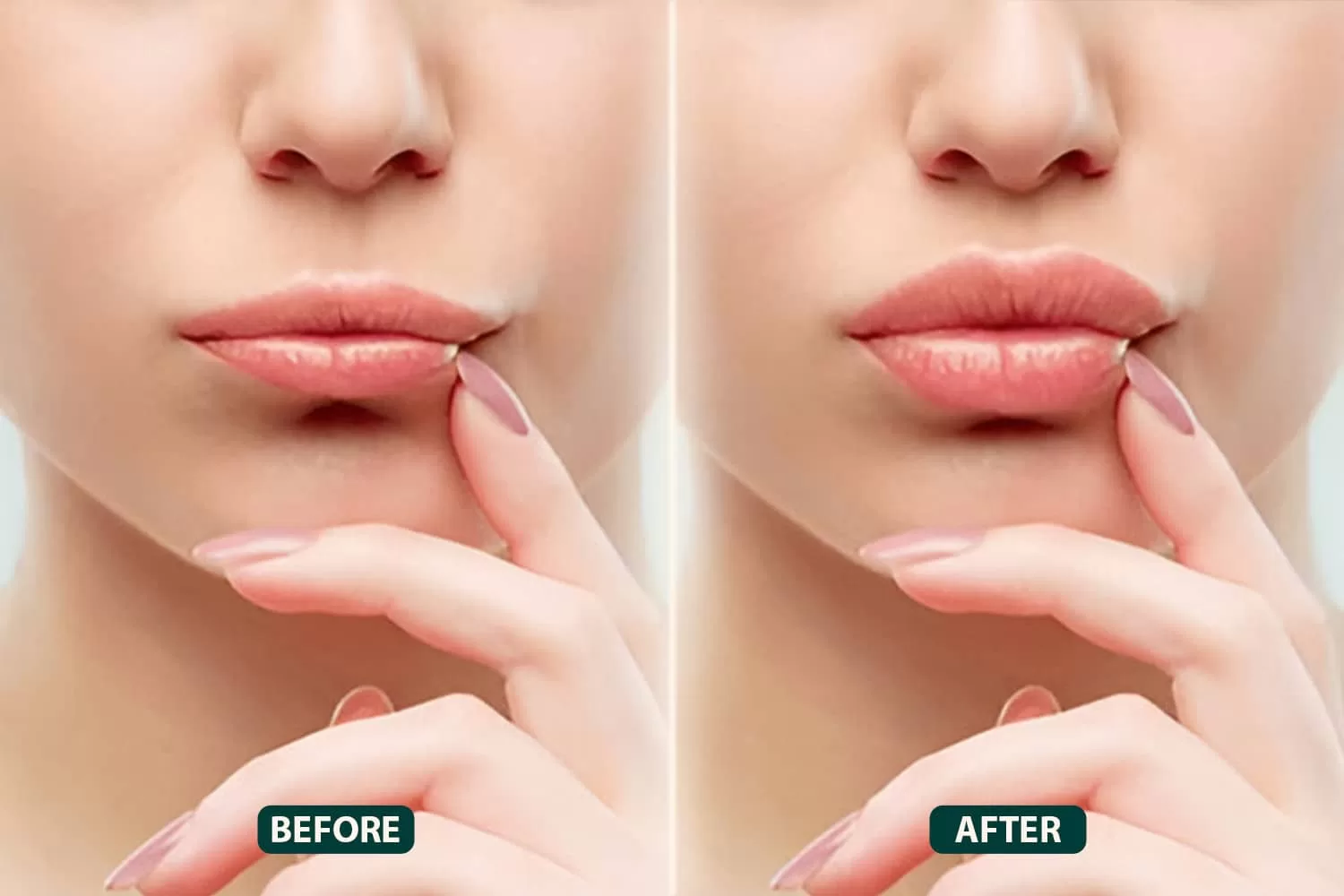
The global visibility of lip filler treatments, largely fueled by highly curated digital content, has made the pursuit of augmented lip aesthetics immensely popular. However, the omnipresent “before and after” photos, which are the primary driver of patient interest, represent a highly controlled, idealized window into the procedure’s results. Lip filler before and after photos are essential tools for consultation, but they must be interpreted with a critical, realistic lens, recognizing that the dramatic, immediate results shown often include the temporary effects of swelling and ideal lighting that will inevitably subside. The true value of these visual aids lies not in their immediate impact, but in their ability to showcase a practitioner’s style, their subtle artistry in managing volume, projection, and the often-overlooked nuances of the vermilion border and cupid’s bow. A successful outcome hinges on moving past the pursuit of an extreme, celebrity-inspired result and focusing instead on achieving a proportional, harmonious enhancement that respects the patient’s underlying facial anatomy and ensures a natural appearance once the initial post-procedure phase has concluded.
Lip Filler Before and After Photos Are Essential Tools for Consultation
For patients considering dermal fillers, the before and after gallery is the most tangible representation of what is possible. Lip filler before and after photos are essential tools for consultation because they provide evidence of the practitioner’s skill and aesthetic philosophy. When reviewing these images, the focus should not solely be on the magnitude of the change, but on the quality of the result. A discerning eye will look for signs of proportion—does the lower lip remain slightly fuller than the upper lip, maintaining a natural ratio? Has the practitioner successfully defined the delicate anatomical structures like the philtrum columns and the cupid’s bow without creating an unnatural shelf or “duck-lip” appearance? The consistency of subtle, natural results across a wide portfolio is a far better indicator of proficiency than a few extreme transformations.
The Dramatic, Immediate Results Shown Often Include the Temporary Effects of Swelling
A common pitfall in viewing online results is mistaking the acute post-procedure appearance for the final, settled outcome. The dramatic, immediate results shown often include the temporary effects of swelling, which can significantly exaggerate the size and projection of the lips. Immediately after injection, the trauma of the needles and the presence of the hyaluronic acid (HA) material itself trigger an inflammatory response, leading to visible edema. This swelling can peak in the first 24 to 48 hours and can make the lips appear substantially larger than they will be once they have fully settled. Patients must be counselled that the “after” photo taken on the day of the procedure is not the final result; the true, stabilized volume will be visible only after two to four weeks, once all inflammation and minor bruising have completely resolved.
Final Outcome is Governed by the Patient’s Underlying Anatomy
The artistic goal of lip augmentation should be integration, not isolation. The final outcome is governed by the patient’s underlying anatomy, including the shape of their teeth, the skeletal structure of their jaw, and the amount of vermilion show they possess naturally. A skilled injector understands that the lip’s final appearance is a function of its three-dimensional projection relative to the nose and chin, and its volume relative to the patient’s mouth width. Photos demonstrating results that look proportional across various facial expressions—not just a static pose—are invaluable. Attempting to achieve a volume or shape that radically deviates from the patient’s existing features can lead to an aesthetically jarring result that appears unnatural from all angles, regardless of the quality of the filler material used.
The True Final Shape of the Lip Will Emerge Over Several Weeks
Patience is a non-negotiable component of recovery, and rushing to judge the result can lead to unnecessary anxiety. The true final shape of the lip will emerge over several weeks as the HA filler integrates with the surrounding tissue and the body processes the inflammatory response. During the initial period, minor lumps, bumps, or slight asymmetries are common and are often due to localized swelling or the filler temporarily settling. These localized issues frequently resolve on their own. Prematurely panicking or seeking immediate “top-ups” or revisions during this transitional phase is ill-advised. A qualified practitioner will emphasize the necessity of waiting the full two to four weeks before evaluating the result, addressing any residual, persistent unevenness, or adding more volume if necessary.
Different Filler Products and Techniques Yield Distinct Results
It is a misconception that all lip fillers and injection techniques produce the same result. Different filler products and techniques yield distinct results, which should be evident in a diverse portfolio of photos. Fillers vary significantly in their G-prime (firmness), viscosity, and cohesivity. A softer, lower G-prime filler might be used to achieve subtle hydration and smooth the fine lines, whereas a firmer product might be selected for precise border definition or projection along the central axis. Similarly, techniques like the use of a cannula versus a needle, or injecting into the superficial dermis versus the deeper submucosal plane, will produce different outcomes in terms of projection, texture, and longevity, all of which should ideally be discussed and visible in the practitioner’s work.
Long-Term Longevity and Maintenance Should Be Discussed
Lip filler is not a permanent solution, and this reality must be grounded in the consultation process. Long-term longevity and maintenance should be discussed using before and after photos that show results not just at one month, but perhaps at six or twelve months post-treatment. HA fillers are naturally broken down by the body’s hyaluronidase enzyme. Factors like individual metabolism, the filler product used, and lifestyle choices (like smoking or intense exercise) all influence the rate of degradation. The photo gallery should demonstrate a realistic rate of volume loss over time, setting the expectation that touch-up sessions—typically required every six to eighteen months—are a built-in, non-negotiable component of maintaining the desired aesthetic outcome.
Photos Showing the Perioral Area in Motion Are More Informative
Static, posed photos can easily conceal unnatural stiffness or over-projection when the patient is smiling or talking. Photos showing the perioral area in motion are more informative than simple closed-mouth pictures because they reveal how the filler integrates with the dynamic muscles around the mouth. A truly natural-looking augmentation retains its shape and smooth contour when the patient laughs, smiles, or forms different vowels. Results that look stiff, heavy, or cause the upper lip to flatten inappropriately when smiling indicate that the filler was placed too superficially or that an excessive volume was used, compromising the dynamic, natural function of the mouth muscles.
Recognizing the Signs of Over-Filling or Migration Is Crucial
An important educational element for patients is learning to identify unfavorable outcomes, which can be spotted even in photos. Recognizing the signs of over-filling or migration is crucial for selecting a conservative, ethical practitioner. Signs of over-filling include the “shelf” appearance, where the upper lip projects unnaturally forward from the base, or a persistent, tight look even at rest. Migration, where the filler moves above the vermilion border into the white lip area, creates a telltale puffy appearance that obscures the natural crisp line of the lip. Ethical practitioners will often include “before and after” photos of corrective work they have performed, showcasing their ability to dissolve poorly placed filler and restore a natural contour.
Pre-Treatment Photos Should Capture the Patient’s Natural State
The accuracy of the “before” photograph is just as important as the quality of the “after” result. Pre-treatment photos should capture the patient’s natural state without makeup, special lighting, or flattering angles that minimize the existing volume. This baseline photo serves as the factual, objective starting point against which all future results are measured. It helps the practitioner and the patient define the specific goals—whether it is simply adding hydration, defining the border, or balancing asymmetry—and acts as a psychological tool to prevent body dysmorphia or aesthetic fatigue, ensuring the patient can accurately appreciate the true magnitude and subtlety of the final change.
The Most Successful Enhancements are the Most Subtle
Ultimately, the gold standard for any aesthetic procedure is subtlety. The most successful enhancements are the most subtle, achieving a result that looks like an improved, refreshed version of the patient’s natural features, rather than an obvious modification. The objective should be for others to notice that the patient looks exceptionally well-rested or generally beautiful, without immediately identifying the procedure. A consultation that focuses heavily on a harmonious balance across the whole face, rather than just lip size in isolation, is a strong indication of a practitioner who prioritizes artistry and natural results over hyper-exaggerated trends, ensuring long-term patient satisfaction and aesthetic integration.
